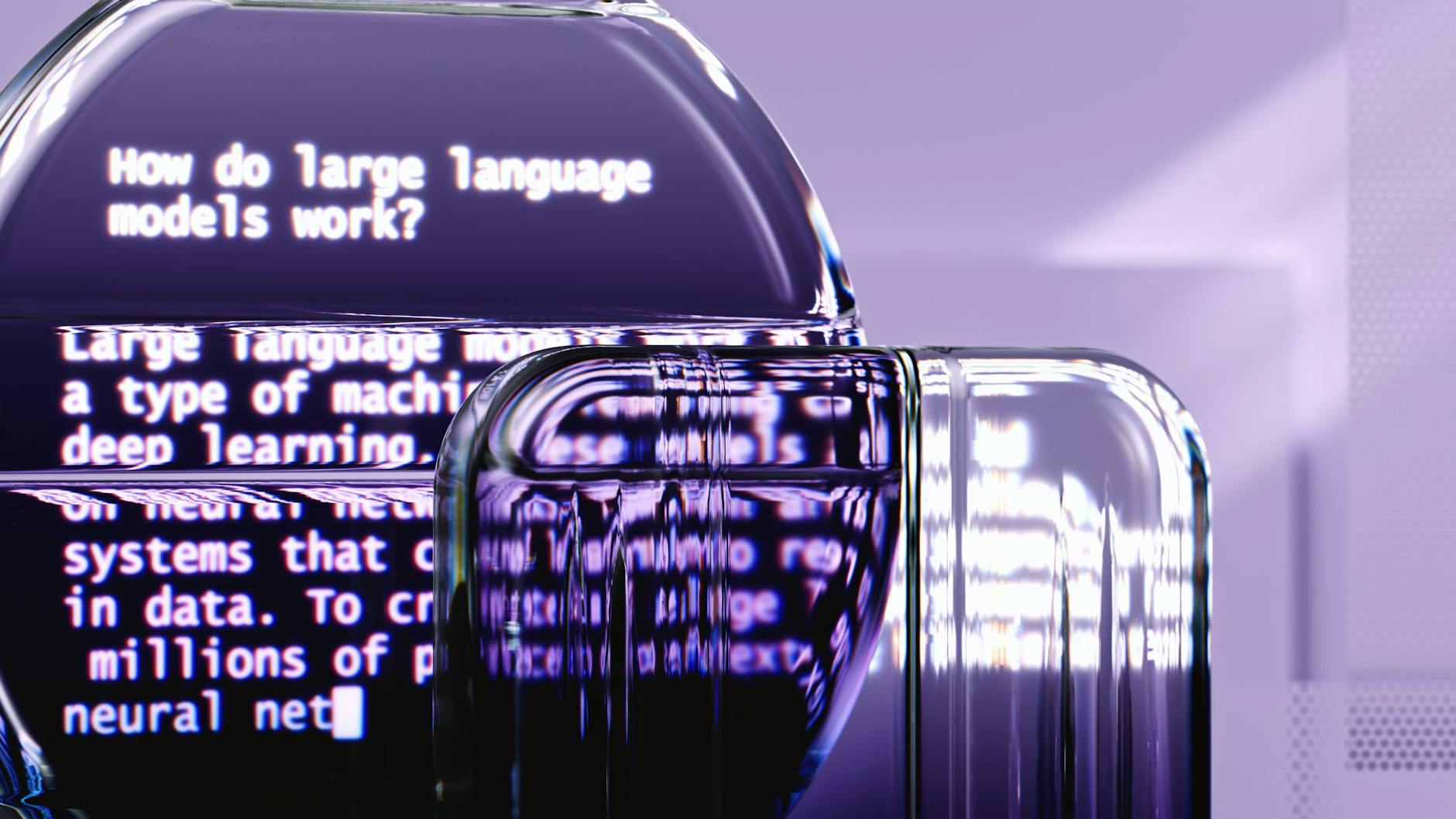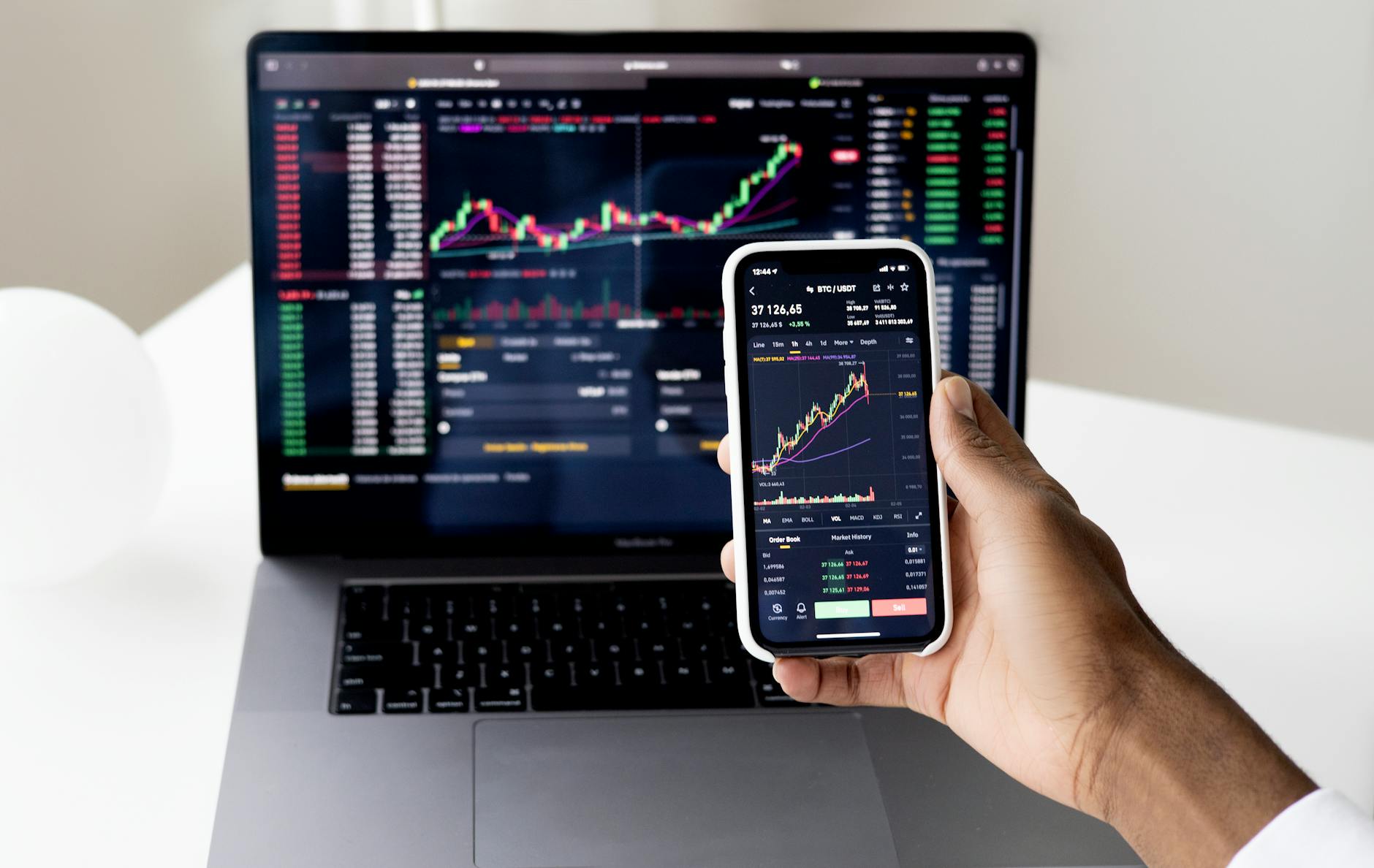What Is ChatGPT and How to Invest in Artificial Intelligence Safely
Artificial intelligence is transforming the way we interact with technology, and ChatGPT is at the forefront of this change. Developed by OpenAI, ChatGPT is an advanced AI language model designed to understand and generate human-like text. While you can’t invest directly in ChatGPT, its impact on industries has created opportunities to back companies and technologies driving AI innovation. In this post, we’ll explore what makes ChatGPT significant and how you can approach investing in this rapidly growing sector.
Understanding ChatGPT
Artificial intelligence is no longer a futuristic concept; it’s here, influencing our world in many ways. ChatGPT, one of the most recognised models developed by OpenAI, embodies the potential of AI in processing and understanding human language. This section explores ChatGPT’s role, its underlying technology, and its applications across industries.
What is ChatGPT?
ChatGPT stands for “Chat Generative Pre-trained Transformer.” It is an advanced AI language model capable of generating text that mimics human conversation. Developed by OpenAI and based on the GPT (Generative Pre-trained Transformer) architecture, ChatGPT has been fine-tuned to perform a wide range of language-related tasks.
At its core, ChatGPT functions by predicting the next word in a given context. Using vast datasets, it has “learned” to understand and construct sentences. This allows it to answer questions, provide tailored suggestions, and even manage conversational nuances. Think of it as a digital companion capable of engaging and adapting to human dialogue. For more detailed insights, you can explore this comprehensive overview.

Photo by Google DeepMind
The Technology Behind ChatGPT
ChatGPT operates on the GPT architecture, powered by machine learning and neural networks. These technologies are the backbone of its ability to understand human language. Essentially, GPT models are pre-trained on vast amounts of text data drawn from books, articles, and the internet. This learning phase equips the system with knowledge about grammar, facts, and even pop culture references.
The neural network, a type of machine learning model, is structured to mimic the human brain. Complex layers of algorithms process the data, decode meanings, and predict responses. Add fine-tuning to the equation, and ChatGPT becomes adaptable to specific instructions or queries. You can discover the technical evolution behind ChatGPT here.
An easy way to think of this is to imagine a student becoming an expert – first reading comprehensive textbooks (machine pre-training) and then practising certain skills for real-life tasks (fine-tuning). The result? An AI model capable of generating remarkably accurate and contextually relevant text.
Applications of ChatGPT
The versatility of ChatGPT means it’s not just a tool for tech enthusiasts. It is rapidly being applied across a range of industries, showing real-world value. Here are some key applications:
- Customer service: Companies utilise ChatGPT-powered chatbots to handle customer queries, improving efficiency and user experience. Learn more about this use case here.
- Education: ChatGPT can assist with tutoring, generating study materials, or answering student queries in real time.
- Content creation: It helps bloggers, marketers, and writers develop drafts, brainstorm ideas, or refine content.
- Healthcare: Used cautiously, it supports professionals by organising patient information and providing preliminary health advice.
- Programming: Developers rely on ChatGPT for troubleshooting code errors, learning syntax, and writing blocks of code.
These applications demonstrate how ChatGPT is not confined to text generation but extends into problem-solving and enhancing existing workflows. For example, if you’re looking into practical uses beyond business settings, check out this list of ChatGPT applications.
ChatGPT’s potential continues to grow as updates improve its accuracy and adaptability, making it an indispensable part of AI innovation today.
Investing in ChatGPT
While ChatGPT is revolutionising industries by showcasing the power of AI, directly investing in this technology is not straightforward. However, investment opportunities abound around OpenAI, the creators of ChatGPT, and the broader artificial intelligence sector. Here’s an in-depth look.
Is ChatGPT a Publicly Traded Company?
Let’s address a common question: can you buy ChatGPT stock? Simply put, no. ChatGPT is a product of OpenAI, which is not publicly traded. OpenAI operates as a private entity with significant backing from external partners, such as Microsoft. For those eager to invest directly, this limitation may feel like hitting a wall — but don’t worry. There are alternative ways to get involved financially.
Many companies, through partnerships or by leveraging OpenAI technology, are exploring how ChatGPT enhances their service ecosystems. A notable example is Microsoft, which has heavily invested in OpenAI and integrated GPT capabilities into tools like Azure OpenAI Service. For more details on OpenAI’s structure and partnerships, this article on how to invest indirectly in OpenAI is a good starting point.
Direct Investment Options
Want to invest directly in OpenAI? While OpenAI itself is private, there are avenues to explore:
- Private equity or venture funds: OpenAI has collaborated with private investors or institutions, and some funds include a stake in the company. For instance, the ARK Venture Fund or Fundrise Innovation Fund may occasionally hold equity in OpenAI. Platforms such as Forge Global provide opportunities to invest in pre-IPO companies like OpenAI for qualifying investors.
- Second-hand shares: Some existing employees or early investors in OpenAI may choose to sell their stakes via secondary markets. However, such options require significant capital and come with risks.
Do bear in mind that these opportunities often come with higher barriers to entry, such as accreditation requirements and minimum investments. If this feels out of reach, explore indirect means discussed in the next sections.
Indirect Investment Through AI Stocks
Investing in companies involved with AI technologies like ChatGPT is another practical approach. Large corporations have embraced OpenAI’s breakthroughs, leveraging the GPT architecture for tools and business optimisation. Consider these entities:
- Microsoft: A frontrunner in OpenAI investment, Microsoft has integrated ChatGPT into its Azure services and Office suite. By investing in companies like Microsoft, you participate indirectly in OpenAI’s growth without needing direct ownership.
Find out more about Microsoft and others contributing to the ecosystem in this list of organisations. - Nvidia: Graphics processing units (GPUs) are the backbone of AI processing. Nvidia supplies computational infrastructure for systems like ChatGPT. As AI expands, so does Nvidia’s market influence.
- Other AI-driven companies: Firms like Alphabet (Google’s parent company) and Adobe have created or adopted generative AI innovations competing with ChatGPT. These businesses offer exposure to the broader world of conversational AI.
These stocks represent a mix of direct technical involvement, client integration, and partnerships within the AI ecosystem.

Photo by Google DeepMind
Investing in AI Funds
Want broader exposure to AI without picking individual stocks? AI-focused mutual funds and ETFs (Exchange-Traded Funds) are excellent options. These investment vehicles provide diversified stakes in companies advancing AI, big data, and machine learning. Some popular options include:
- Global X Robotics & Artificial Intelligence ETF (BOTZ): This fund focuses on robotics and innovation linked to automation and AI.
- ROBO Global Robotics and Automation Index ETF: A well-rounded choice for those wanting exposure to automation and tech players.
- Roundhill Generative AI & Technology ETF (CHAT): Specifically targeted at generative AI technologies, including conversational platforms.
Check out this detailed list of best-performing AI ETFs for more information.
ETFs and funds let you participate in the broader AI revolution while spreading risk across various companies. If you’re unsure about individual stock performance but still want to capitalise on technology trends, these funds can be a strategic starting point.
Investing in artificial intelligence offers thrilling possibilities, and ChatGPT is at the heart of this momentum. Whether your focus is on direct funding, AI-powered corporations, or diversified funds, aligning your investments with this tech boom presents promising opportunities.
Using ChatGPT for Investment Decisions
AI technology like ChatGPT is increasingly becoming a valuable tool for investors seeking to streamline their decision-making processes. While it’s not a replacement for expert analysis, ChatGPT has features that can provide actionable insights and refine investment strategies when used properly.
Setting Up ChatGPT for Investment

Photo by Anna Nekrashevich
To make effective use of ChatGPT for generating investment ideas, setting up clear parameters is essential. Here’s a step-by-step guide:
- Define Specific Goals: Are you looking for growth stocks? Dividend income? Risk diversification? Make your objectives clear before you start.
- Format Precise Questions: Instead of asking general questions like “What stocks should I buy?”, provide context. For example, “What are the top-performing tech stocks under $100?”
- Use Reliable Data: Consider feeding ChatGPT with reliable datasets or cross-checking its recommendations with professional resources. This ensures its outputs align with your criteria.
- Experiment with Scenarios: Generate multiple scenarios. For instance, ask for stock options during a bearish market or sectors thriving in a high-interest rate environment.
ChatGPT works best when users communicate thoughtfully. Treat it as a financial assistant, not a fortune teller.
Looking for a deeper dive into maximising ChatGPT’s potential? This article offers practical tips.
Evaluating Stock Opportunities
When it comes to evaluating stocks, ChatGPT can assist by analysing and summarising financial data. Here’s how you can assess stock opportunities with this AI tool:
- Financial Statements Analysis: ChatGPT can interpret key metrics such as P/E ratio, market capitalisation, and dividend yield, offering a simplified breakdown.
- Sector Trends: Ask it to identify growth patterns within specific industries. For instance, trends in renewable energy or AI-related sectors.
- SWOT Analysis: Use ChatGPT to run a basic SWOT (Strengths, Weaknesses, Opportunities, Threats) analysis of potential investments. It excels in drawing connections from existing data.
- Historical Context: Query historical stock prices and performance patterns to gauge long-term viability.
Remember, these insights are helpful but require cross-referencing with trusted financial platforms or expert advice.
Curious about the integration of AI in evaluating stocks? Explore this Forbes article for more expert opinions.
Limitations of ChatGPT in Investing
While ChatGPT offers convenience and speed, it has clear limitations that investors should be aware of:
- Data Recency Issues: ChatGPT may not have access to the most up-to-date financial data or real-time market changes.
- No Emotional Intelligence: It can’t gauge market sentiment, an often critical factor in investment decision-making.
- Risk of Over-reliance: Blindly following AI-generated advice can result in ill-informed financial decisions. Always validate outcomes through other resources or professionals.
- Lack of Nuance: Complex investment strategies often require context and judgment beyond ChatGPT’s programming capabilities.
For a deeper understanding of potential pitfalls, a detailed analysis is available here.
While ChatGPT can significantly streamline research, it should always complement, not replace, thorough due diligence and consultation with a financial advisor.
Conclusion
ChatGPT exemplifies the transformative potential of artificial intelligence. While direct investment in its core platform isn’t feasible, options abound. Backing partners like Microsoft or exploring AI-dedicated ETFs provides indirect exposure. For investors, embracing the AI era offers both opportunities and challenges, underscoring the importance of informed decision-making.
The AI revolution is here to stay. How will you position your portfolio to thrive in this new era?










